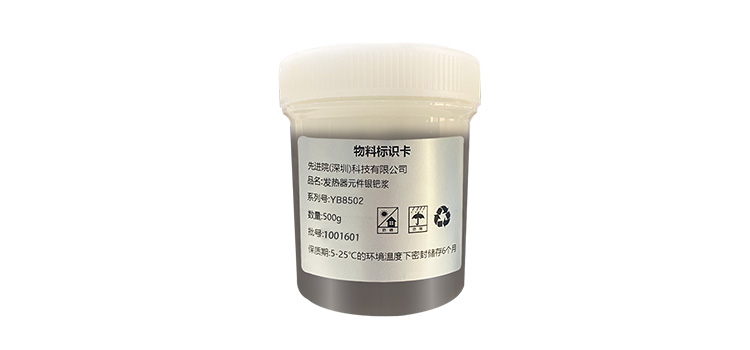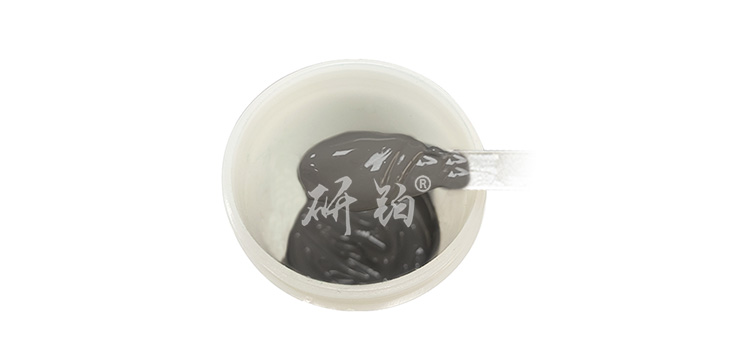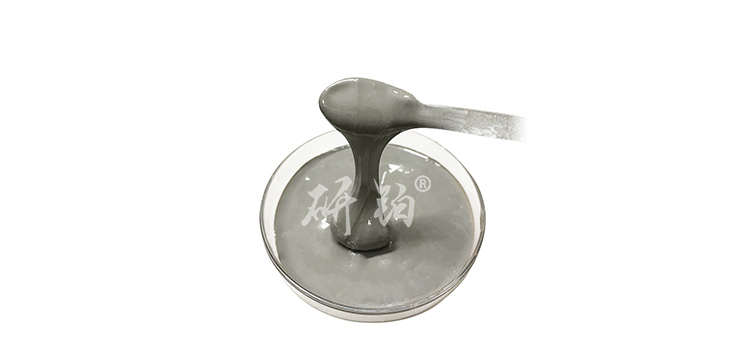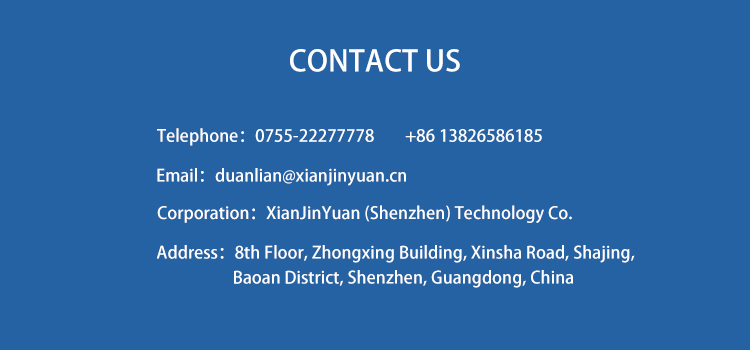

Hotline:0755-22277778
Tel:0755-22277778
Mobile:13826586185(Mr.Duan)
Fax:0755-22277776
E-mail:duanlian@xianjinyuan.cn
In the modern electronic industry, silver palladium paste, as an important conductive material, is widely used in thick film circuits, high-voltage resistors, and high-voltage focusing potentiometers for heating elements. However, ensuring good adhesion between the silver palladium slurry and the heater substrate is one of the key factors in ensuring equipment performance and reliability. This article will explore how to improve the adhesion between the silver palladium paste of the heating element and the heating element substrate by optimizing the formula, surface treatment, sintering conditions, and stress management methods, and use the technology produced by Advanced Institute (Shenzhen) Technology Co., LtdResearch Platinum Brand YB8502 Heater Element Silver Palladium PasteProvide an example for illustration.
The formula of silver palladium paste is the basis that affects adhesion.Advanced Institute (Shenzhen) Technology Co., LtdThe silver palladium paste of YB8502 heating element produced by Yanbo brand contains adhesive and auxiliary agents that match the base material of the heating element through a carefully designed formula. These components can provide good adhesion, allowing the silver palladium paste to firmly adhere to the substrate material.
Selection of adhesives: Choose adhesives that can form chemical or hydrogen bonds with the base material of the heater, such as resins containing functional groups such as amino, hydroxyl, carboxyl, etc. These functional groups can react with oxygen and hydrogen atoms on the surface of the substrate to improve adhesion.
Addition of auxiliary agents: Adding appropriate amounts of leveling agents, dispersants, coupling agents and other auxiliary agents can improve the flowability and dispersibility of silver palladium slurry, enabling it to better wet the substrate surface and enhance physical adsorption capacity.
The treatment of the surface of the heater substrate is a key step in improving adhesion. By removing dirt and oxides and increasing surface energy, the adhesion between silver palladium paste and substrate material can be significantly improved.
Chemical cleaning: Use appropriate chemical cleaning agents such as acid washing, alkali washing, etc. to remove grease, dirt, and oxides from the surface of the substrate.
Mechanical grinding: By using methods such as mechanical grinding and polishing, the surface of the substrate is roughened to a certain degree, increasing the contact area and mechanical biting force between the silver palladium slurry and the substrate surface.
Chemical treatment: Chemical etching, anodizing and other methods are used to further increase the activity of the substrate surface and improve the bonding strength with silver palladium paste.
Sintering isSilver palladium pasteThe process of forming ceramic structures is also the key to achieving good adhesion with the substrate material. Appropriate sintering temperature and time can tightly bond silver palladium particles with the substrate material, improving adhesion.
Sintering temperature: Select an appropriate sintering temperature to completely decompose the organic components in the silver palladium slurry, and fuse the inorganic components to form a dense ceramic structure. Excessive sintering temperature may lead to diffusion and damage of the bonding interface, reducing adhesion.
Sintering time: Control the sintering time to ensure that the silver palladium slurry fully reacts with the substrate material, forming a strong bond. A too short sintering time may lead to weak bonding, while a too long sintering time may cause excessive oxidation of the silver palladium paste, reducing its conductivity.
The stress between silver palladium paste and substrate material is another important factor affecting adhesion. Excessive mechanical or thermal stress may cause delamination and fracture between the silver palladium paste and the substrate material.
Reasonable design: When designing the heater, the difference in thermal expansion coefficients between materials should be considered to avoid excessive thermal stress.
Process optimization: In the production process, temperature changes in coating, sintering and other processes should be controlled to avoid excessive mechanical stress.
Stress buffering: Adding a stress buffering layer, such as elastic material or flexible connection, between silver palladium paste and substrate material can further reduce the influence of stress on adhesion.
Produced by Advanced Institute (Shenzhen) Technology Co., LtdResearch Platinum Brand YB8502 Heater Element Silver Palladium PasteBy optimizing the formula, surface treatment, sintering conditions, and stress management, the adhesion with the heater substrate has been successfully improved. This product performs well in applications such as thick film circuits, high-voltage resistors, and high-voltage focusing potentiometers, with long-term stability and reliability.
To improve the adhesion between the silver palladium paste of the heating element and the heating substrate, it is necessary to start from multiple aspects such as formula optimization, surface treatment, sintering conditions, and stress management. By selecting and optimizing these factors reasonably, the adhesion of silver palladium slurry can be significantly improved, ensuring its stability and reliability in application. The silver palladium paste of YB8502 heating element produced by Advanced Institute (Shenzhen) Technology Co., Ltd. is an outstanding representative of this concept.
The above data is for reference only, and specific performance may vary due to production processes and product specifications.

Advanced Institute (Shenzhen) Technology Co., Ltd, © two thousand and twenty-onewww.avanzado.cn. All rights reservedGuangdong ICP No. 2021051947-1 © two thousand and twenty-onewww.xianjinyuan.cn. All rights reservedGuangdong ICP No. 2021051947-2